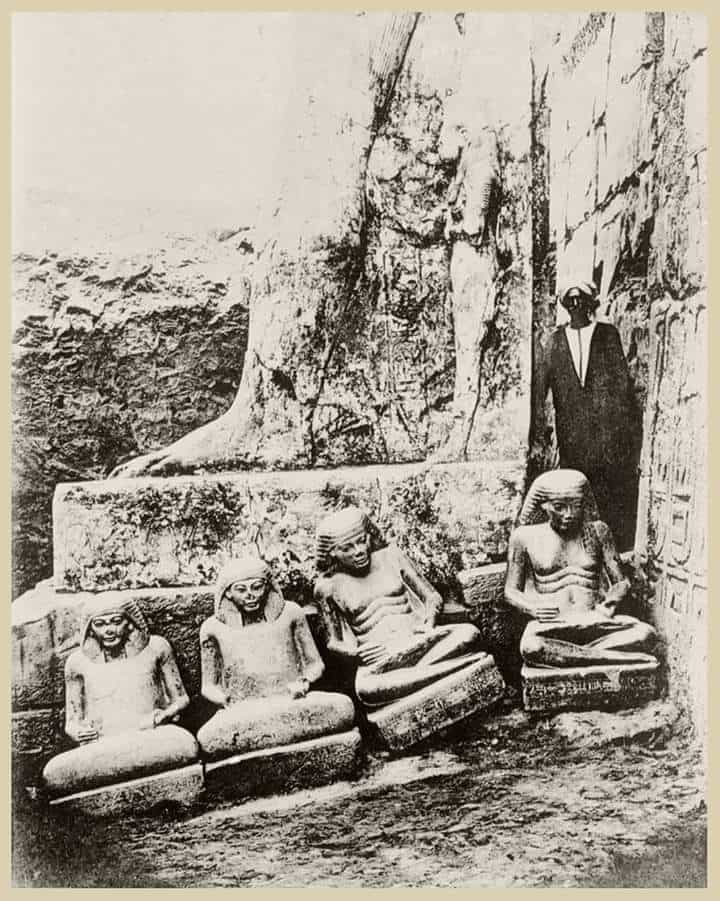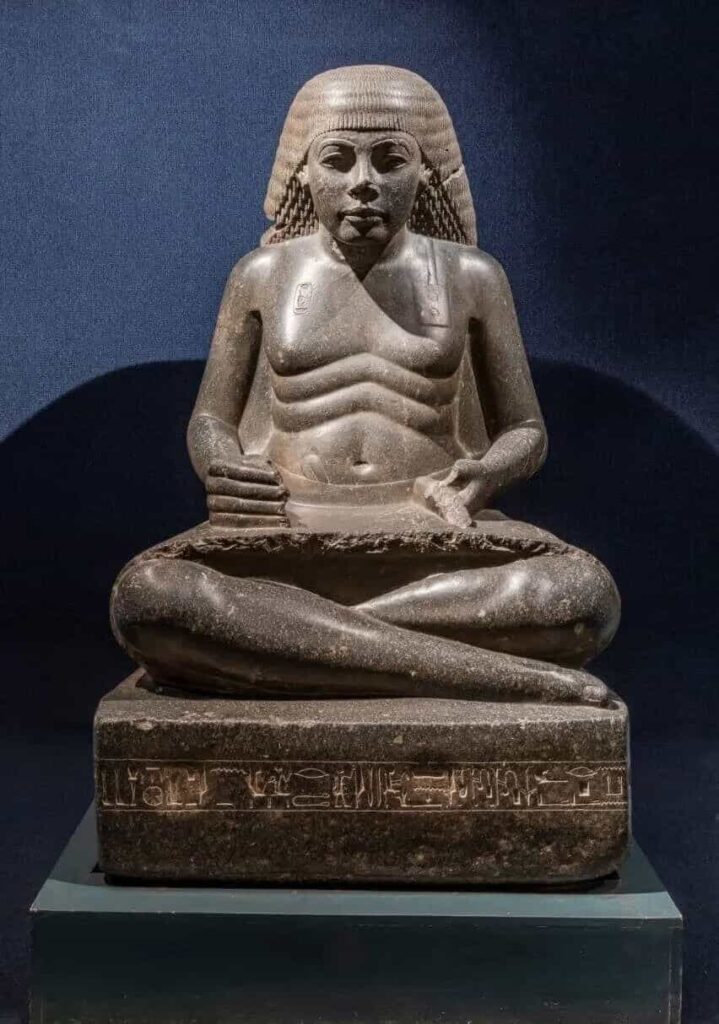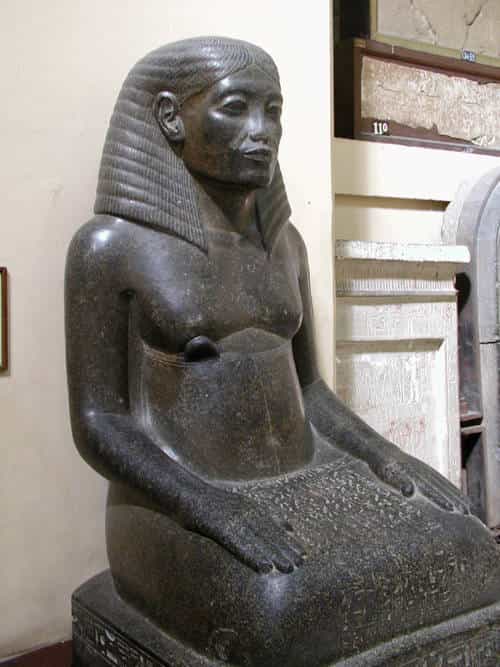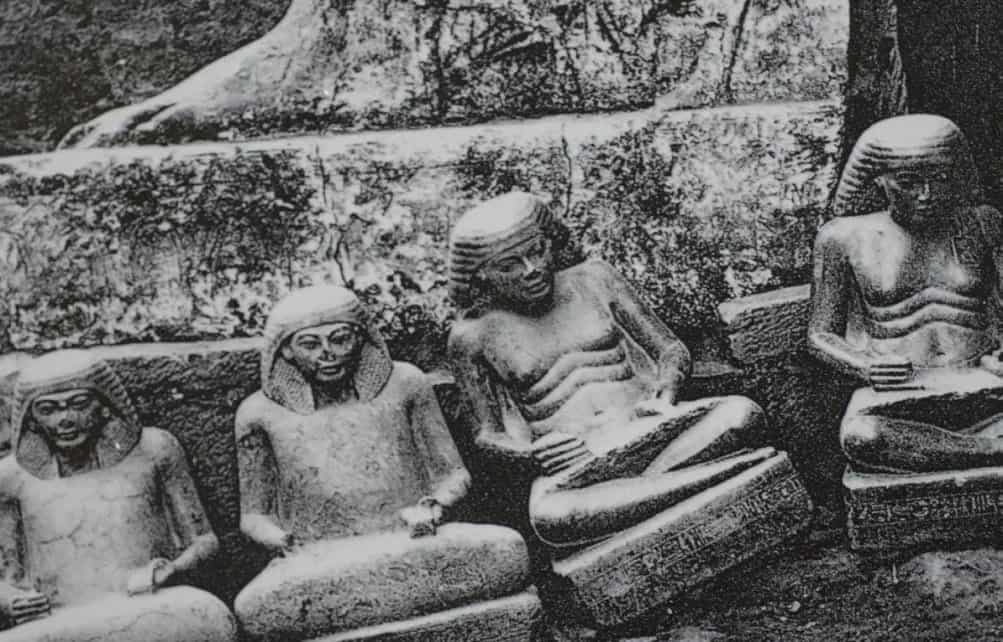Amenhotep was a prominent scribe who rose to become one of the most influential figures in Ancient Egypt during the 14th century BC, serving as a public official in the reign of Amenhotep III.
Birth
Amenhotep was likely born in the city of Athribis, located in Lower Egypt, to a family that may have been part of the local nobility. His father, Hapu, held positions as both a Royal Scribe and Priest of Horus, while his mother, Itu, held the title of Lady of the House.
The exact date of Amenhotep’s birth remains unknown, but it likely occurred towards the end of Thutmose III‘s reign or at the beginning of Amenhotep II’s rule.
However, it wasn’t until approximately fifty years later that he would gain widespread recognition. The path from a humble scribe to a prominent figure in the highest ranks of society, working initially in Memphis and later in Thebes under the shadow of the pharaoh, remains shrouded in mystery. Nevertheless, it is probable that he ascended based on his own merits, given the remarkable potential he possessed.
Titles
Amenhotep accrued an ever-expanding array of titles throughout the extensive and prosperous reign of Amenhotep III, ultimately solidifying his status as the quintessential statesman:
Military Titles, including: Chief of the Memphis Army, Chief of Recruitment, Governor and Scribe of the Soldiers…
Religious Titles, such as: Priest Shem, First Prophet of Athribis, Great Celebrant of Amun, Intendant of the flocks of Amun…
Civil Titles, comprising: Royal Scribe, Head of the Census, Head of Public Works, and most notably, Head of all the King’s work, which elevated him to the position of royal architect—a title he seemed to hold with great pride.
Courtly Titles, denoting his close relationship with the monarchy, such as: Friend of the King, Bearer of the Royal Seal, Fan-bearer on the Right Side of the King, Administrator of the estate of Sitamun, daughter of Amenhotep III.
Most important works
One of Amenhotep’s enduring legacies lies in the construction of Amenhotep III’s mortuary temple in the Theban necropolis, a feat that etched his name into the annals of history.
Regrettably, little remains of this grand edifice save for the Colossi of Memnon, weathered by time and neglect, standing as silent sentinels amidst the desolate landscape.
In a gesture of unprecedented honor, Amenhotep was bestowed with a tribute unparalleled in Egyptian history: the commissioning of a funerary temple dedicated to himself, Amenhotep, son of Hapu. Though dwarfed in scale by the grandiose monuments of pharaohs, this temple stood as a testament to his esteemed position, promising eternal remembrance for millennia to come.
Among his other notable undertakings were the supervision of the temples of Luxor and Soleb, the erection of new pylons at Karnak, and the expansion of the temples of Mut and Khonsu. Additionally, he oversaw the construction of the Malkata Palace, a lavish gift from Amenhotep III to his esteemed Great Royal Wife, Queen Tiye.
Human
There exist numerous statues of Amenhotep, many in remarkable condition. Predominantly depicted as a humble scribe, these statues often convey his unwavering devotion to the god Amun, narrate aspects of his life story, or commemorate his remarkable achievement of reaching his 80th birthday—a feat truly remarkable for his era.
In these sculptures, Amenhotep is portrayed as a serene elder, content with his place in the world, unabashed by his modest origins. Indeed, he is frequently identified with the epithet “son of Hapu,” proudly acknowledging his lineage.
Perhaps one of the most challenging roles assumed by this sagacious figure was that of mediator amid the brewing conflict between the priests of Amun and the royal family.
Previous monarchs had sought to diminish the influence of the priestly caste, which wielded considerable power. However, during Amenhotep III’s reign, the priests experienced a resurgence in influence not seen since the era of Hatshepsut.
In response, the royal court attempted to restore religious equilibrium by aligning with the solar cults of Heliopolis, sidelining Amun.
Deification
Amenhotep, son of Hapu, remained entrenched in popular consciousness long after his passing, along with his contemporaries. To such an extent, he eventually came to be revered as a minor deity during the Ptolemaic period, a millennium after his departure from the mortal realm.
Associated with the revered sage Imhotep, who also attained divine status, Amenhotep was venerated as a benevolent magician who interceded on behalf of devotees before Amun and other deities, believed to possess healing and protective powers.
In Thebes, the city where the majority of monuments dedicated to him and the pharaoh he served were erected, Amenhotep even had chapels dedicated to his worship, perpetuating his legacy for generations to come.










